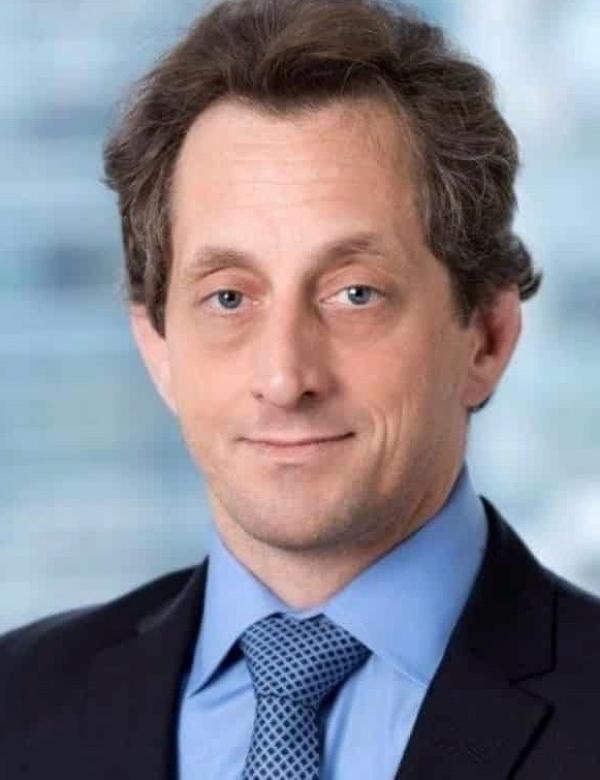In Beyond Wall Street Episode 8, Jan Brzeski of Arixa Capital interviews Tod Trabocco, Director of Strategy and Research at ITE Management to discuss investing in physical assets for cash flow. Beyond Wall Street is where expert investors make their unique investment strategies easy to understand.
When you see a freight train, did you know that you can invest and participate in owning some of the rail cars for income and attractive returns? In this episode, Tod Trabocco explains his firm's strategy of buying and leasing out transportation equipment including rail cars, airplanes and shipping containers. Tod describes how they play the role of a landlord, only with their investment being this equipment instead of buildings.
Jan Brzeski: What are the main strategies that ITE pursues?
Tod Trabocco: I think the clearest way to describe it would be to say that we're a landlord, but not of buildings, of things that move. So, if you've ever had a mortgage or you've had a lease, you're allowed to use the house, you're allowed to use the apartment or whatever, and you have to pay a mortgage and you have to pay the lease regardless of whether or not you're there. And sometimes you have to maintain the house. Like in a mortgage, that's on you. Or sometimes you can call up the landlord and say, "Hey, I need you to fix the broken window." We do that with railcars, containers, aircraft, things like that.
Jan Brzeski: Do you typically own the assets and then you lease them out for income? Is that how the strategy works?
Tod Trabocco: That's exactly right. If you think about it, we're essentially like GMAC or Toyota Motor Finance. When you buy a car or when you lease a car, the Toyota dealership or the whatever, General Motors dealership actually sells the car to its financing wing. And then you as the lessee pay the lease payments to the financial arm of the manufacturer. And that's really what we are. We own the asset and lease it out.
Jan Brzeski: And what are the returns that you're targeting from the actual investment?
Tod Trabocco: Most transportation assets in the industrial space, whether it's containers, aircraft, new aircraft let's say, and railcars will yield you somewhere between, on a gross basis, somewhere between eight and 12 percent.
Jan Brzeski: So, for most investors, an eight percent return is a huge return compared to other income-oriented investments. Like what they get in the stock or bond market is probably two or three. So, why is it such a high return compared to other income oriented strategies?
Tod Trabocco: That's the beauty of these types of assets. Right? So railcars and airplanes and containers and certain types of shipping, they're not financial assets. Right? They're not there to go to the highest bidder and they're not subject to technical influences. And you'll never see GameStop in the shipping space. You'll never see that happen. Right? You'll never see Bitcoin in aircraft. And the reasons that these assets are productive, they're essential and they're critical to the lessees. And they serve a purpose. They're not just a store of value that is arbitrarily determined by people's spreadsheets. The CFOs of these companies that lease these businesses leave the leasing decisions to the logistics managers, the people whose jobs depends on getting goods or people from point A to point B. They're not necessarily focused on maximizing capital adequacy and capital efficiency and getting the best possible rate. They're more focused on making sure that they have the right assets at the right time when they need them. And as a result of that, they're willing to pay up a premium for that.
Jan Brzeski: And how long is a typical lease? Maybe you could give us an example from each of the different areas that we've been talking about, railcars, shipping, and aircraft.
Tod Trabocco: Railcar leases can can run up to 10 years. And shipping containers can run five to seven. Aircraft leases, you can get leases there up to that 10-year life period as well. The key, though, is the types of leases that you have. The leases are what are known as hell or high water. So the lessee owes the lease payment to the lessor regardless of use. And it's a little bit like if you've ever rented an apartment, it doesn't matter if you go on a business trip for a week or two, you still have to pay the landlord for having access to it. Because that's really what the lessee's paid for is having access to the asset.
Jan Brzeski: Are you typically leasing a given asset multiple times during the time that you own the asset? You said these leases can range up to 10 years, so how long is their useful life?
Tod Trabocco: A railcar lease can last up to 50 years. An airplane can last up to 25 years. A container can last up to 12 years or even longer. So, you have the chance to release the asset over its life. Generally for container, you'll probably lease it for one cycle, one life, and then you might sell it into the secondary market. But aircraft you can lease over and over again, same thing with railcars.
Jan Brzeski: Do you typically sell these assets before the end of their useful life or do you use them as long as you can lease them?
Tod Trabocco: You don't want to really drive return with these assets from the exit multiple. You want to drive return from the leases. You want to provide a nice, stable income to people.
Jan Brzeski: So, where does this fit in an investor's portfolio? Is this sort of an equity-like strategy or do you think of it as part of the fixed income portfolio or something different?
Tod Trabocco: This would be part of the fixed income portfolio. Real assets don't have the pop that you can get from any sort of equities. They provide a current yield and very stable, and so fixed income is the best place for them.
Jan Brzeski: Do you typically use debt as part of the strategy to capitalize the cost of an asset? Are you buying it with a combination of investor capital and bank financing?
Tod Trabocco: I think any real asset manager, whether it's multi-family, aircraft, railcars, whatever, will be using debt. The question is just how much. The range would be anywhere from 60 to 85 percent.
To hear the rest of the interview: https://beyondws.com/interviews/bws-episode-8-investing-in-transportati…
About the Authors:
Jan Brzeski founded Arixa Capital in 2006 and serves as Managing Director and Chief Investment Officer. In this capacity, he has ultimate responsibility for the Firm’s investment strategy, risk management and operations.

Mr. Brzeski has extensive experience with every aspect of real estate investment. He has participated in more than 1,700 real estate transactions, investing over $1.8 billion on behalf of Arixa’s investors and partners. Since he founded Arixa Capital, it has become one of the West Coast’s premier non-bank real estate lenders, providing small balance loan solutions to lower middle market residential and commercial investors and developers. Prior to founding Arixa, Mr. Brzeski was Vice President of Acquisitions at Standard Management Company (SMC), a Los Angeles-based private real estate investment firm. During his tenure at SMC, he underwrote, negotiated and originated equity and debt real estate investments across all commercial real estate asset classes. Prior to SMC, Mr. Brzeski was Co-Founder and CEO of STV Communications, Inc., a media services company that provided web broadcasting and hosting services that delivered music, movies, television, radio and other content to the Internet. Mr. Brzeski began his career as an Investment Banking Analyst at Goldman Sachs, where he contributed to initial public offerings, secondary stock and bond offerings, and mergers and acquisitions of leading technology companies.
Mr. Brzeski received his Bachelor of Arts in Physics from Dartmouth College and his Master of Arts in Philosophy, Politics & Economics (PPE) from Oxford University. He is a regular speaker, moderator and panelist at various industry conferences and events. Over the past 15 years, he has organized an annual Real Estate Investment Roundtable at UCLA’s Anderson School of Management and is also a regular guest lecturer there. Mr. Brzeski is proud to support two non-profits: Global First Ladies Alliance and Hope in a Suitcase.
Tod Trabocco has over 25 years of investing and finance experience, joining ITE Management from Cambridge Associates where he was a Managing Director responsible for private credit manager research and selection globally. His coverage universe spanned structured equity, performing credit, and distressed debt. Mr. Trabocco was also Managing Director with Kayne Anderson Capital Advisors and Managing Director at LBC Credit Partners, Inc. Previously, he was Vice President and Senior Analyst at Moody’s Investors Service. He has previously served on the Board of Advisors for the Alternative Investment Forum and advised the Interamerican Development Bank and the US Treasury on matters related to private credit. Mr. Trabocco holds a MALD, Development Economics, from The Fletcher School at Tufts University, an MBA from Columbia Business School, BA from Pomona College, and is a CFA Charter Holder.

About Beyond Wall Street
Beyond Wall Street (BWS) is an opportunity to learn about alternative investing and to be on the cutting edge of the next wave of finance. We interview fund managers and investors who have special insight into an area of investing that is typically not part of the mainstream of stocks, bonds and other public market securities.
It was created by Jan Brzeski who started his first private debt fund making real estate loans in 2010. In speaking with investors, he realized most investors don’t understand alternative investing, and feel overwhelmed by the risks of departing from the mainstream in any way. Jan believes their caution is well-justified, but that the answer is to learn the facts, rather than to avoid the whole category and settle for whatever returns the market may bring.
Our goal is to really understand what makes these different strategies work--and to get a realistic view of what risks are involved. We also embrace the democratization of finance, so technology and strategies that can disrupt the status quo are of special interest to us.




